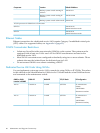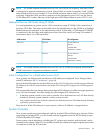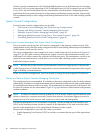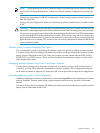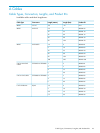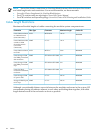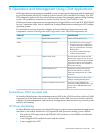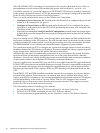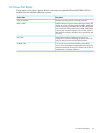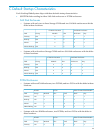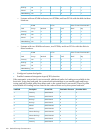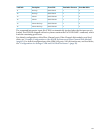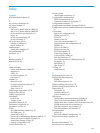If the HP R12000/3 UPS is installed, it is connected to the system’s dedicated service LAN via
the maintenance switch where OSM monitors the power state of either AC on or AC off.
For OSM to provide AC power fail support, an HP R12000/3 UPS must be installed, connected
to the system's dedicated service LAN via the maintenance switch and configured as described
in the NonStop BladeSystems Hardware Installation Manual.
Then, you must perform these actions in the OSM Service Connection:
• Configure a Power Source as AC, located under Enclosure 100, to configure the power rail
(either A or B) connected to AC power.
• Configure a Power Source as UPS, located under Enclosure 100, to configure the power
rail (either A or B) connected to the UPS. While performing this action, you must enter the
IP address of the UPS.
• (Optional/recommended) Verify Power Fail Configuration, located under the system object,
to verify that power fail support has been properly configured and is in place for the NonStop
BladeSystem.
If a power outage occurs, OSM starts a ride-through timer and outputs an EMS notification that
the system is running on the UPS batteries. The ride-through timer can be used to let the system
continue operation for a short period in case the power outage was only a momentary transient.
The ERMs installed in each cabinet can extend the battery-supported system runtime.
The system user must use SCF to configure the system ride-through time to execute an orderly
shutdown before the UPS batteries are depleted. The time available for battery support depends
on the charge in the batteries and the power that the system draws.
Additionally, if the site’s air conditioning shuts down in a power failure, the system should be
shut down before its internal air temperatures can rise to the point that initiates a thermal
shutdown. A timely and orderly shutdown prevents an uncontrolled and asymmetric shutdown
of the system resources from depleted UPS batteries or thermal shutdown.
If a user-supplied rack-mounted UPS or a site UPS is used rather than the HP-supported model
R12000/3 UPS, the system is not notified of the power outage. The user is responsible for detecting
power transients and outages and developing the appropriate actions, which might include a
ride-through time based on the capacity of the site UPS and the power demands made on that
UPS.
The R12000/3 UPS and ERM installed in modular cabinets do not support any devices that are
external to the cabinets. External devices can include tape drives, external disk drives, LAN
routers, and SWAN concentrators. Any external peripheral devices that do not have UPS support
will fail immediately at the onset of a power failure. Plan for UPS support of any external
peripheral devices that must remain operational as system resources. This support can come
from a site UPS or individual units as necessary.
This information relates to handling power failures:
• For ride-through time, see the SCF Reference Manual for the Kernel Subsystem.
• For the TACL SETTIME command, see the TACL Reference Manual.
• To set system time programmatically, see the Guardian Procedure Calls Reference Manual.
96 Operations and Management Using OSM Applications



